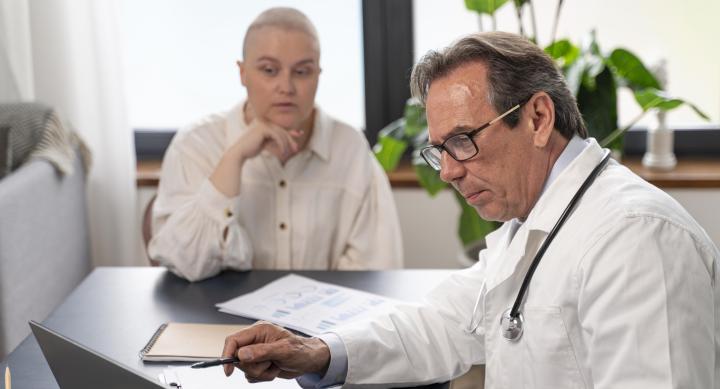
Breaking Bad News and Compassion Fatigue
September 2020
The Think Tank is a multi-disciplinary health communication collective with experience and subject-matter expertise to consult on real-world communication issues in practice. Every month, we select submissions from health professional stakeholders and explore their patient-clinician and inter-professional challenges. Through Think Tank questionnaires and discussion deep dives, our collective of scholars and health professionals offer practical recommendations, share educational materials, and craft messages that stakeholders can implement in practice immediately. Bringing innovative ideas to practice at an accelerated pace, the Think Tank aims to unpack complex conversations and distill effective and structurally competent applications of “what you might say” and “what you could do.”
The topic we covered this month came from Robin Richardson of the Livestrong Institute at the Dell Medical School. The following post captures the recommendations that the Think Tank shared during our in-person deep dive discussion in September and a follow-up list serv circulation.
We posed the following question to the Think Tank:
“What is an evidence-based, compassionate way to talk with patients who are uninsured or underinsured? Charity care policies do not adequately cover the needs of all patients. We try our best to help connect patients to resources, even if we are unable to provide care. This puts our care team in a tough position to convey messages to patients and can lead to moral distress and burnout. We've had patients in tears tell us that we don't care if they live or die. How can we empathetically message our limitations of services to those who are most vulnerable, especially given the lack of coverage options in Texas, (and particularly for those outside of Travis County or don't qualify for MAP or other safety-net programs)?”
Self-Awareness Buffering Compassion Fatigue
Think Tank members also offered that healthcare providers can practice mindfulness and check in with themselves about the level of empathy and personal investment they bring into the work. Feeling close to the patients, in what they described as “highly escalating work,” such as working bedside in oncology, can bring healthcare providers to the edge of compassion fatigue. Think Tank members who are healthcare providers expressed that within their field, the professionals themselves do not always prioritize their mental health, and recognize this trend needs to change.
The discussion about healthcare provider mental health was connected to developing a conversation toolkit and strategies for advocacy. One member highlighted that in each conversation with a patient who is uninsured and underinsured in the oncology context, one must acknowledge both despair and hope. Avoiding saying, "we can’t do anything else" or an “exhausted pragmatism,” as one member said, is important to maintain threads of hope, agency, and control for patients.
Focus on Advocacy
Focusing on advocacy and what you can offer was another major recommendation during this discussion. Advocacy could involve reaching out to community resources or other institutions for assistance outside of the organization. A challenge that emerged was that it can be difficult if your organization does not look fondly upon seeking outside resources. These tensions connected to the idea of moral injury, or a sense of institutional betrayal and distress that emerges when one must go against their values for their organization. Experiencing moral injury is another variable that can hasten compassion fatigue. This point was another that Think Tank members agreed needed to be named and recognized if it happens, and to develop plans for accountability and change to address it.
Develop Plans for Accountability and Change
If those who work bedside in oncology are told that they have to turn away uninsured or underinsured patients, they could benefit from a plan for those conversations and for changing how their organization can adapt to support these patients. The first recommendation that emerged from this conversation was that care teams can have conversations that witness what needs to change and build a reporting structure so that a “shared institutional memory” can be created. Memorializing events and bringing these stories to leadership can instill hope in the care teams and illustrate what is happening to those who are not bedside.

